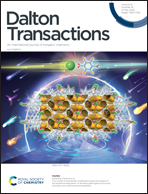Electronic metal–support interaction constructed for preparing sinter-resistant nano-platinum catalyst with redox property†
Abstract
Generally, support materials with particular structural properties could effectively anchor metal nanoparticles and provide lower activation barriers in heterogeneous catalysis. To tailor the structure of stable iron oxide, NiFe2O4 of inverse spinel structure was obtained by combining nickel with iron element under an alkaline environment and high-temperature calcination. The p-type conductivity of NiFe2O4 provides the possibility of constructing electronic interfacial interaction with Pt nanoparticles by electron transfer. The constructed metal–support interaction could effectively stabilize Pt nanoparticles and be further enhanced during long-term harsh calcination (700 °C for 48 h) even under an O2 atmosphere. Meanwhile, the abundant structural defects of NiFe2O4 are beneficial for constructing low-temperature redox centers with the aid of Pt nanoparticles. Pt/NiFe2O4 exhibited not only excellent activity in room-temperature oxidation (CO and HCHO) and reduction reactions (chemo-selective hydrogenation of nitroarenes), but also high stability even after storage for more than 6 months. A self-adjusting mechanism triggered by structural defects is disclosed by in situ characterization and systematic reaction results. This work demonstrates an alternative concept to construct sinter-resistant and highly-effective nano-platinum catalysts robust for oxidation and reduction reactions.



 Please wait while we load your content...
Please wait while we load your content...